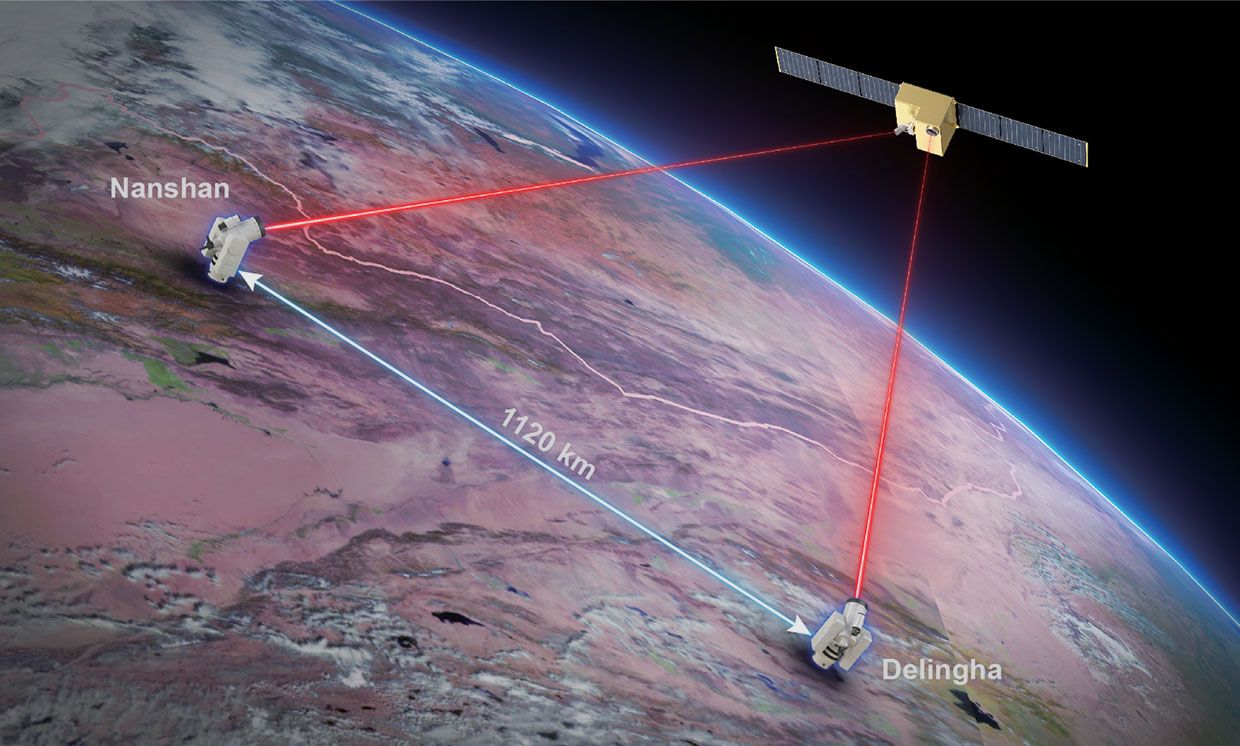Quantum Satellite Links Extend More Than 1,000 Kilometers
A space-based, virtually unhackable quantum Internet may be one step closer to reality due to satellite experiments that linked ground stations more than 1,000 kilometers apart, a new study finds.
Quantum physics makes a strange effect known as entanglement possible. Essentially, two or more particles such as photons that get linked or "entangled" can influence each other simultaneously no matter how far apart they are.
Entanglement is an essential factor in the operations of quantum computers, the networks that would connect them, and the most sophisticated kinds of quantum cryptography, a theoretically unhackable means of securing information exchange.
The maximum distance over which researchers have thus far generated quantum cryptography links between stations on Earth is roughly 144 kilometers. In principle, satellites could serve as relays between ground stations to greatly boost the lengths to which quantum links can extend.
In 2017, scientists in China used the satellite nicknamed Micius, which is dedicated to quantum science experiments, to connect sites on Earth separated by up to roughly 1,200 kilometers via entanglement . Although those experiments generated about 5.9 million entangled pairs of photons every second, the researchers were able to detect only one pair per second, an efficiency rate far too low for useful entanglement-based quantum cryptography.
Now, the same researchers have achieved their goal of entanglement-based quantum cryptography using the Micius satellite. The scientists, who detailed their findings online in the 15 June edition of the journal Nature, say they again connected two observatories separated by 1,120 kilometers. But this time, the collection efficiency of the links was improved by up to four-fold, which resulted in data rates of about 0.12 bits per second.
 Illustration: Micius Team The Micius satellite flies in a sun-synchronous orbit at an altitude of 500 km. The physical distance between the Nanshan and Delingha ground stations is 1120 km.
Illustration: Micius Team The Micius satellite flies in a sun-synchronous orbit at an altitude of 500 km. The physical distance between the Nanshan and Delingha ground stations is 1120 km. The scientists employed two ground stations, in Delingha and Nanshan, in China. Each site had a newly built telescope 1.2 meters wide that was specifically designed for the quantum experiments.
To boost the efficiency of the quantum cryptography links, the researchers focused on improving the systems used to acquire, orient toward and track targets at both the satellite and ground stations. They also made sure to improve the receiving and collection efficiencies of the lenses and other optical equipment on the ground.
A remarkable feature of the entanglement-based quantum cryptography that we demonstrated here is that the security is ensured even if the satellite is controlled by an adversary," says study senior author Jian-Wei Pan, a quantum physicist at the University of Science and Technology of China at Hefei. In other words, even if an unwelcome third party controls the satellite, they cannot eavesdrop on communications through the satellite without the other participants knowing.
The scientists note they could increase the brightness of their spaceborne entangled-photon source by roughly 100-fold. This could boost the data rate of the system to tens of bits per second.